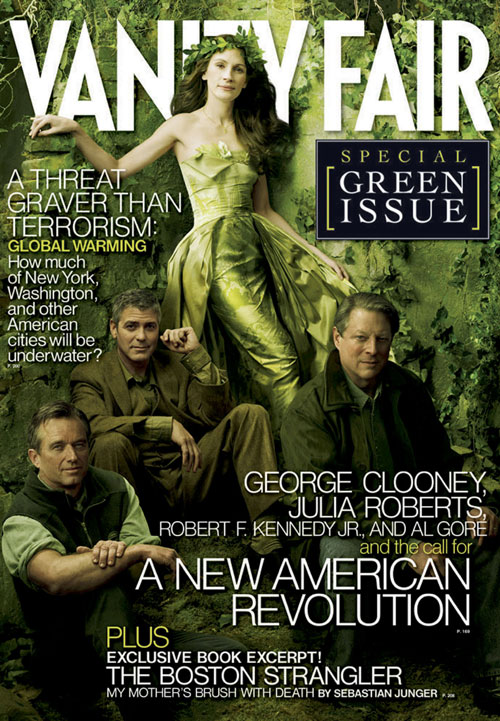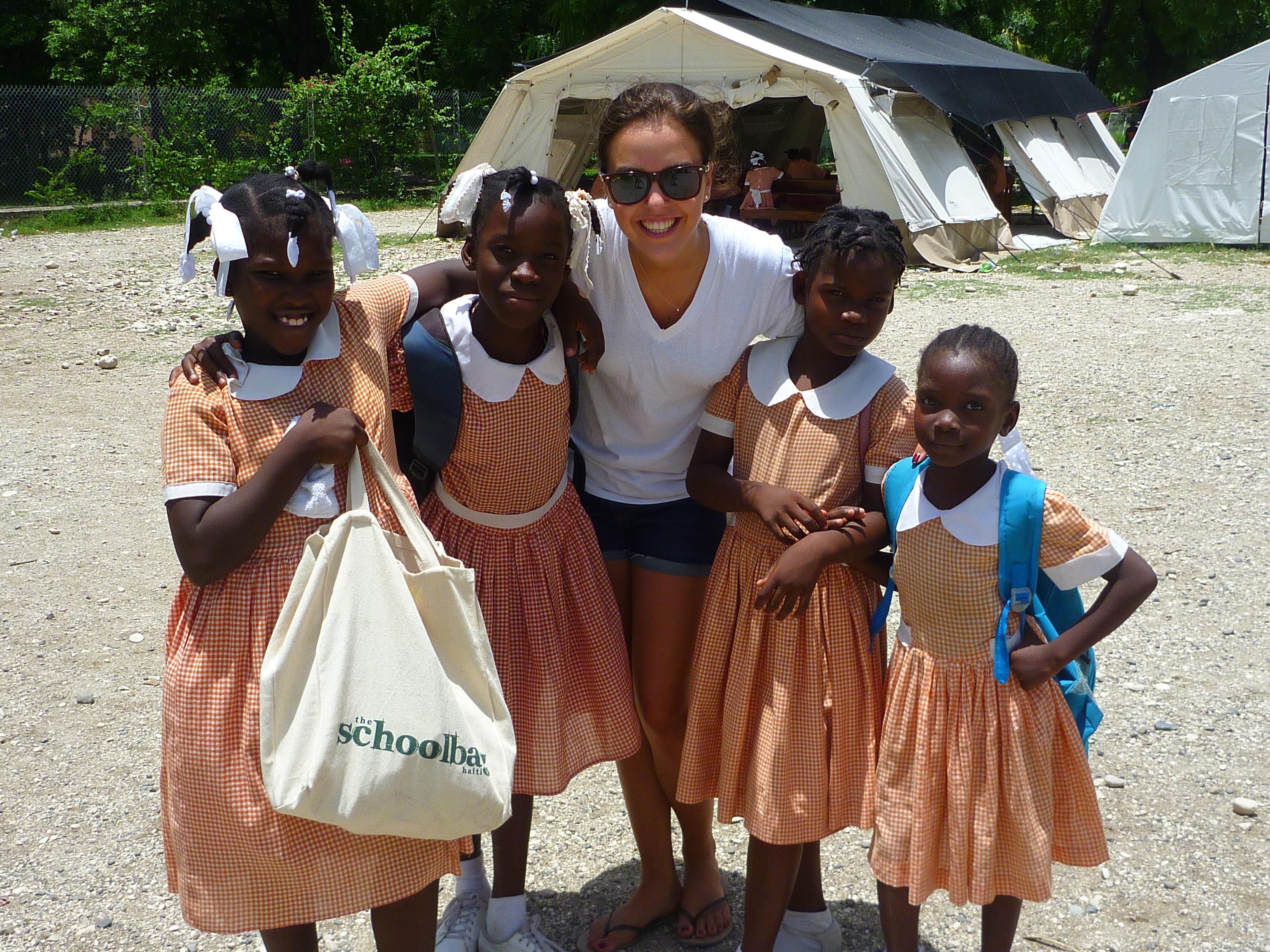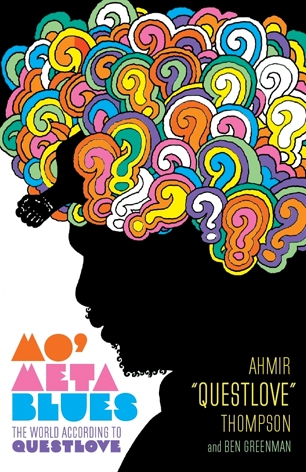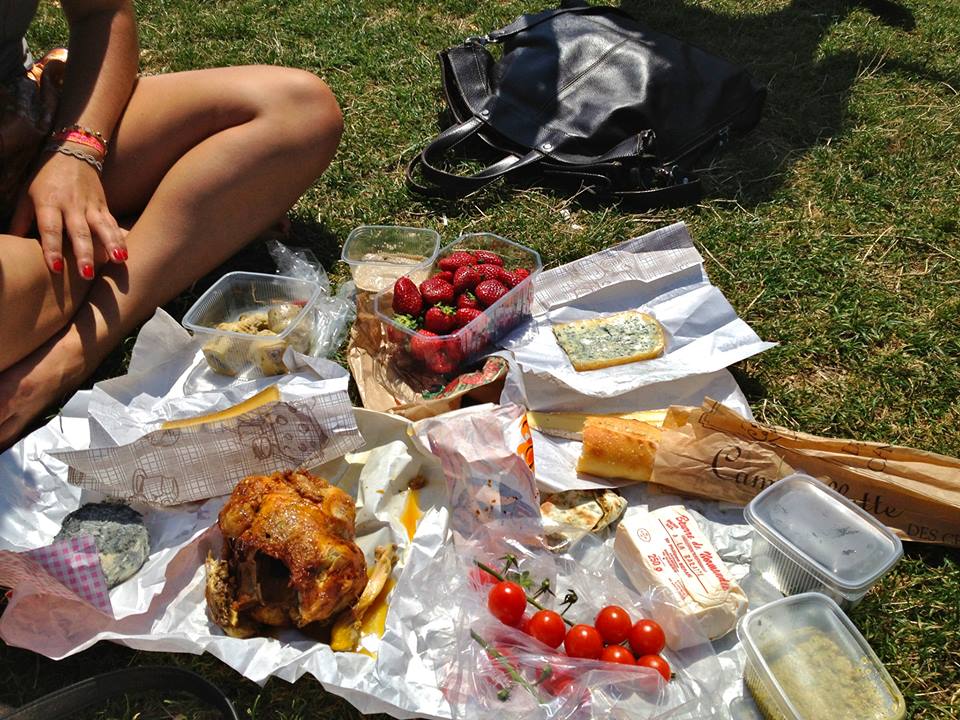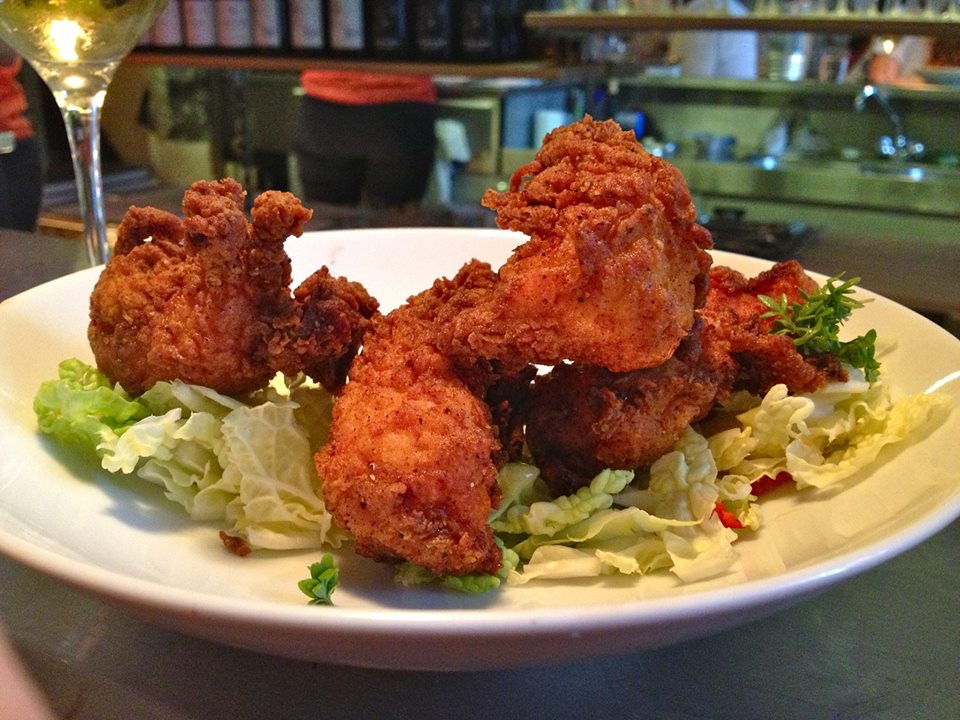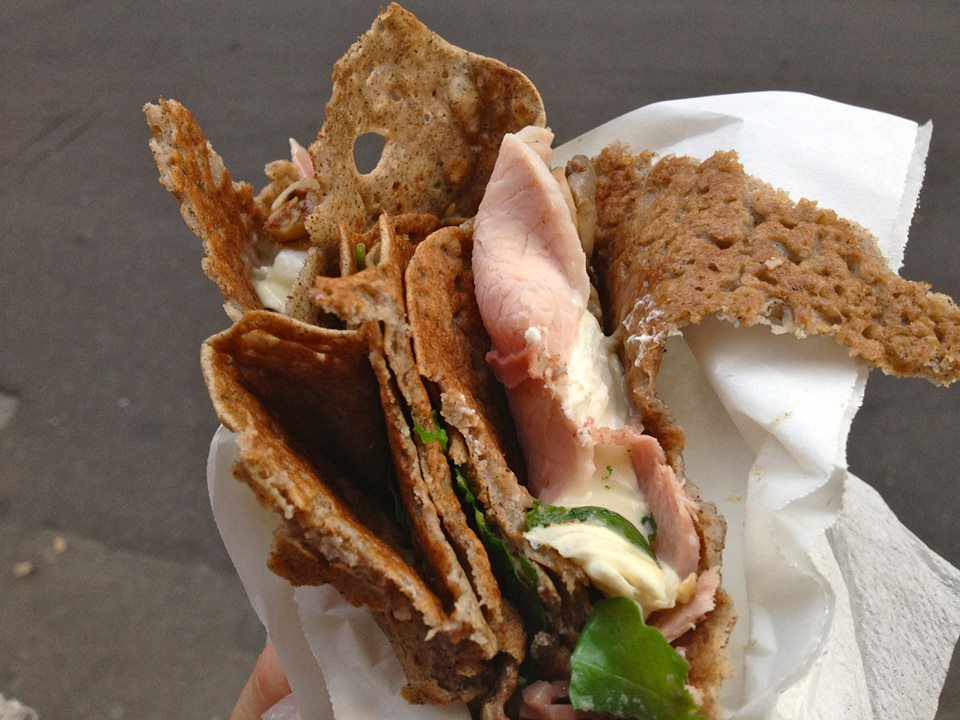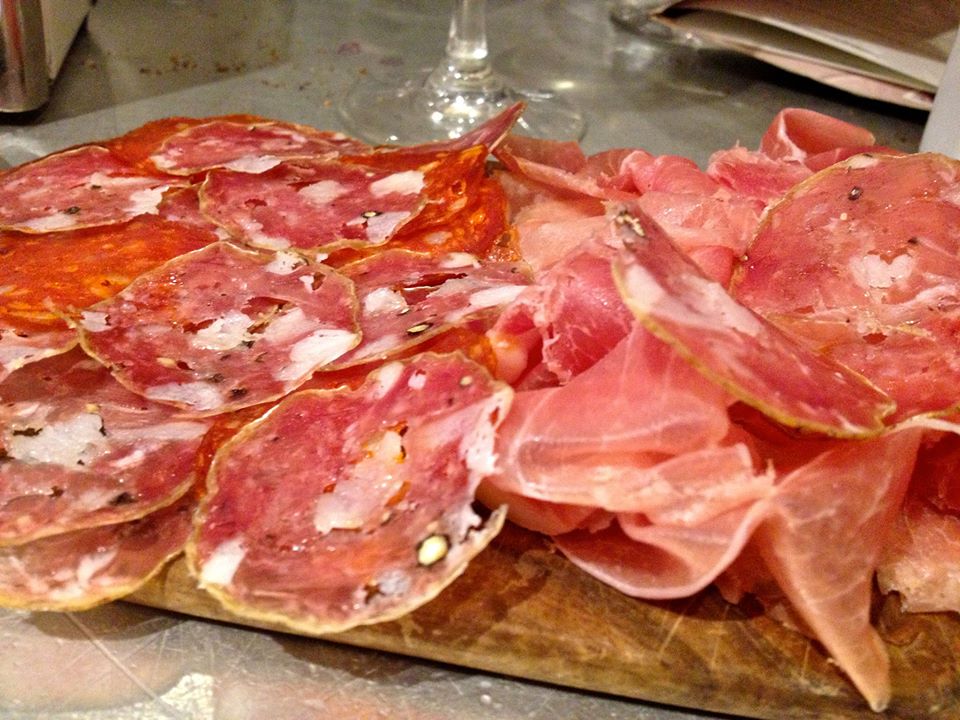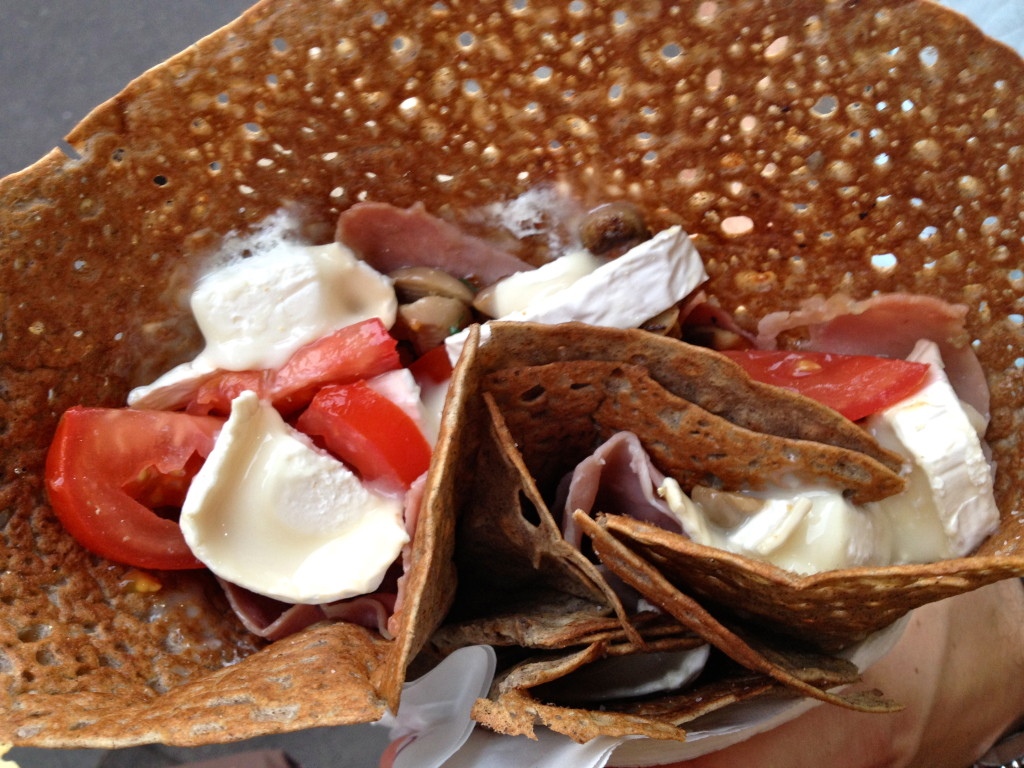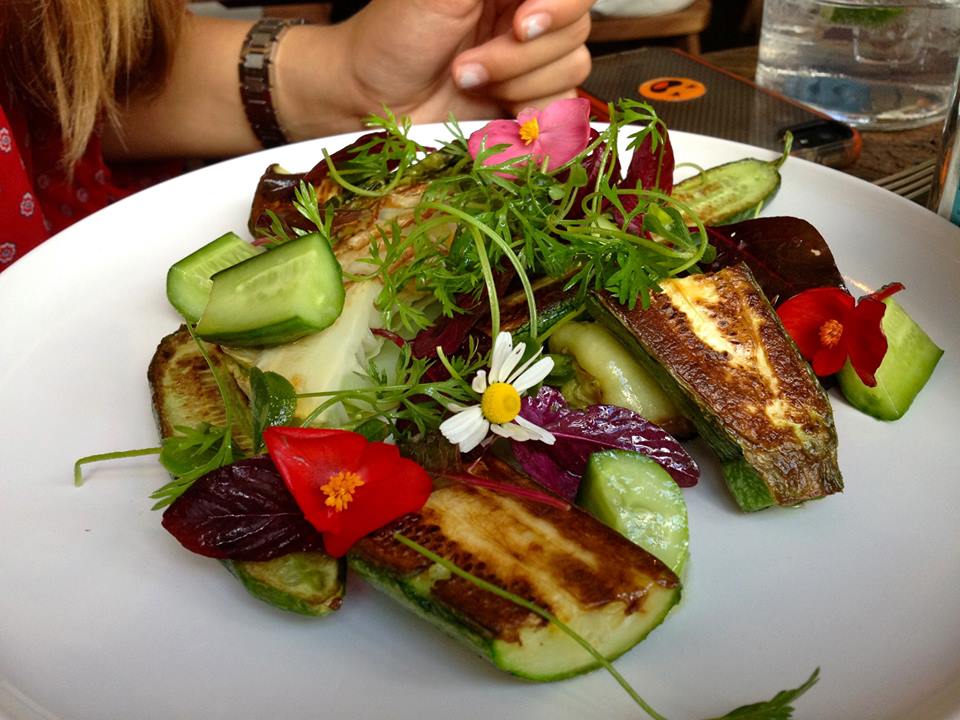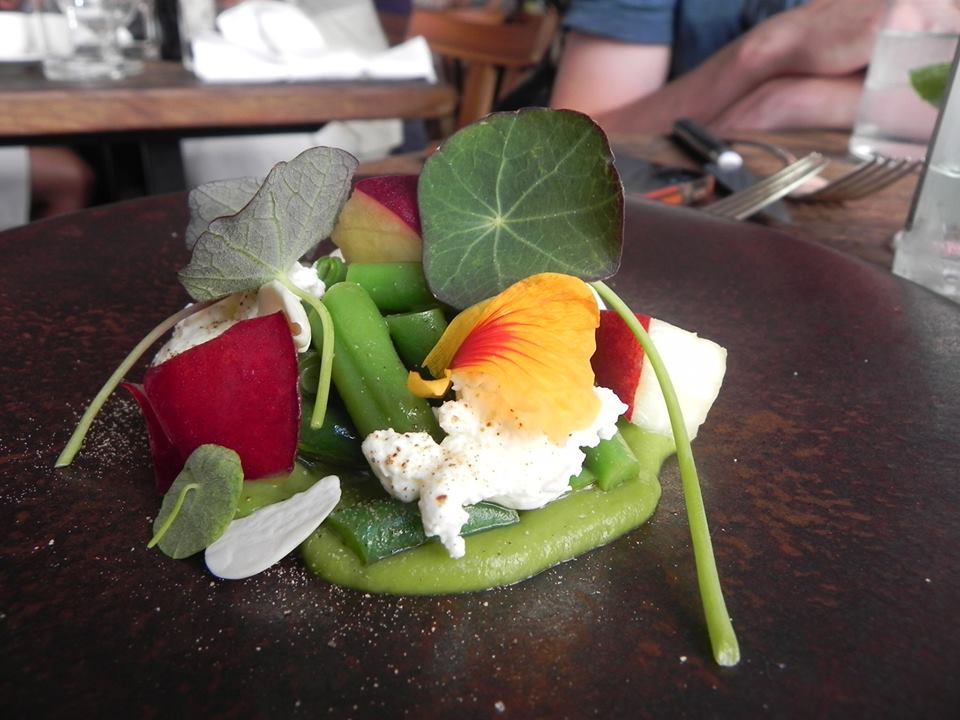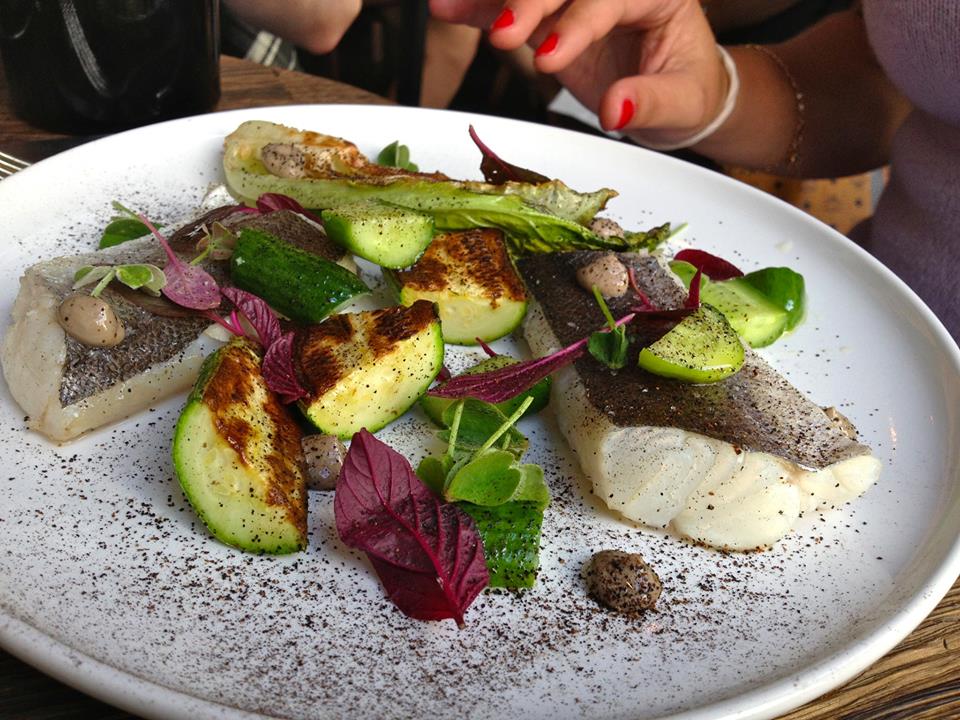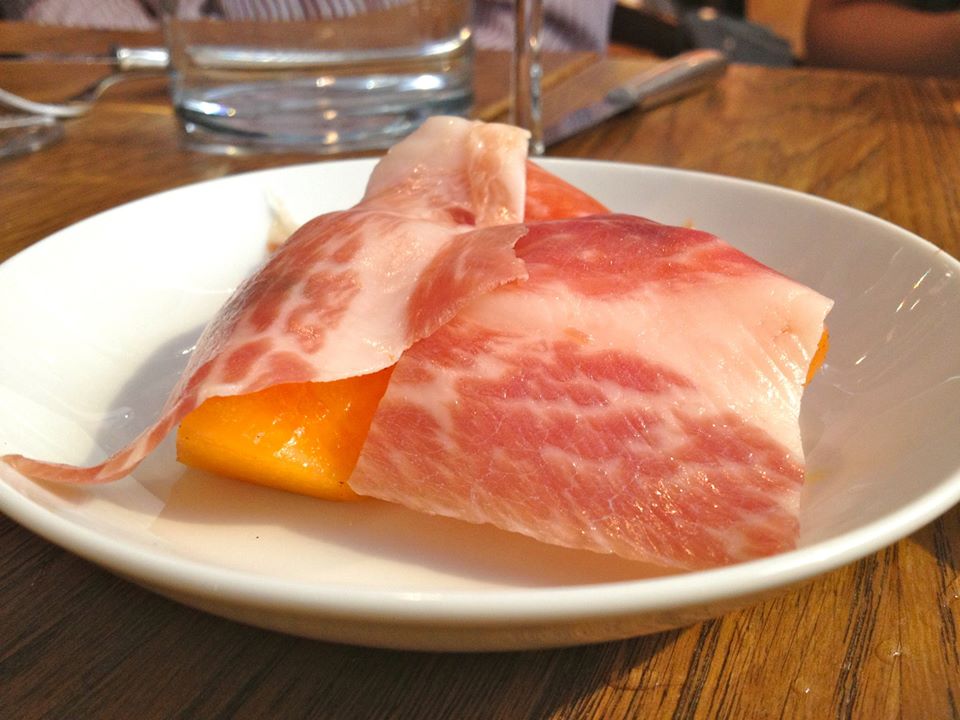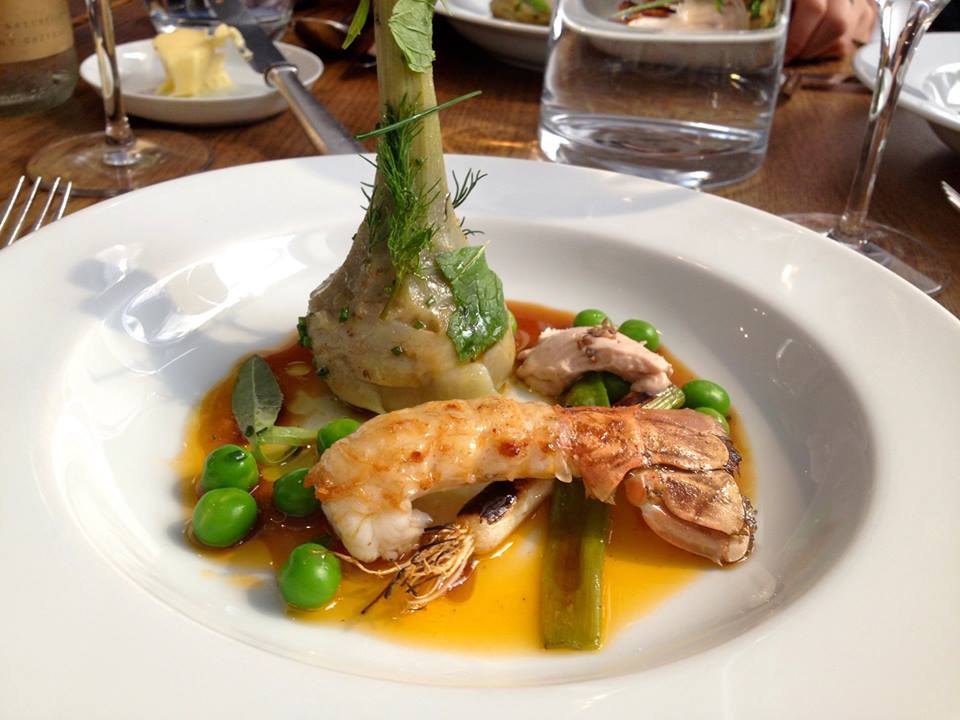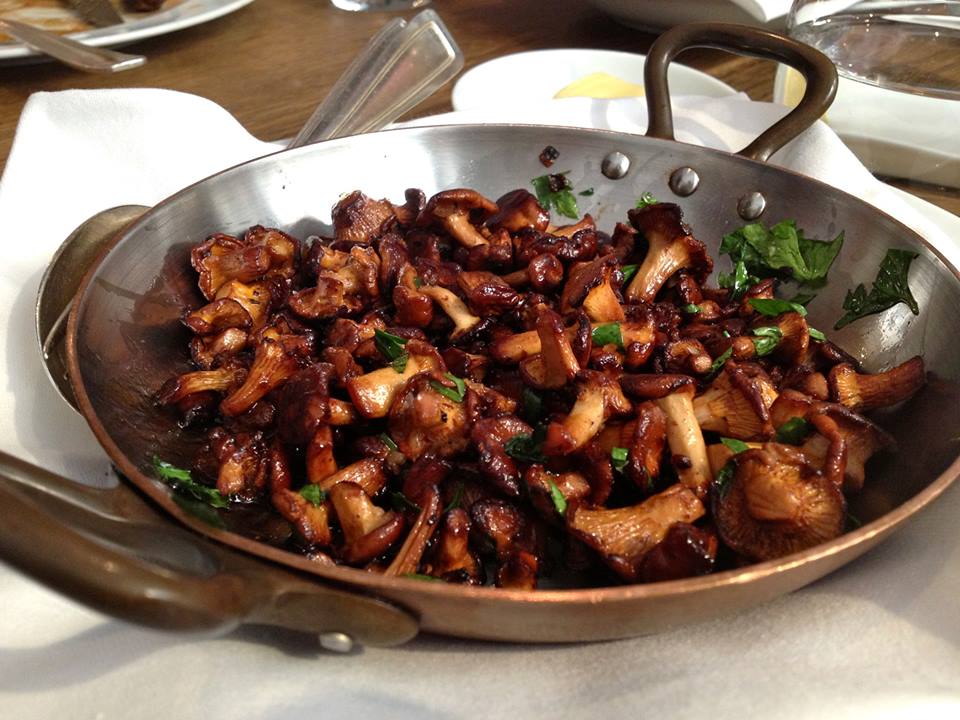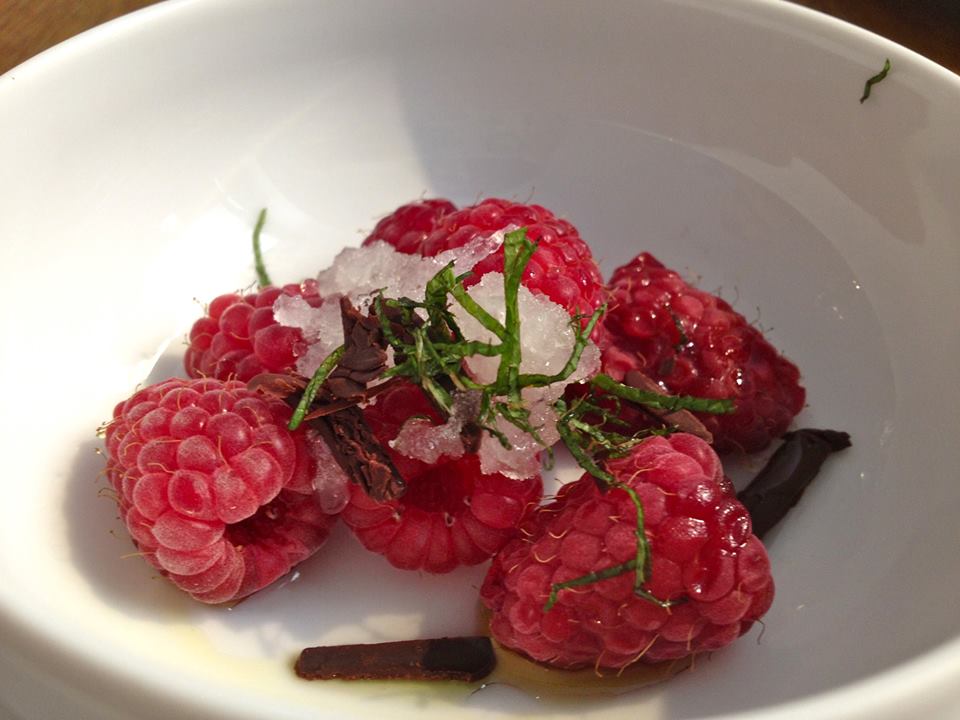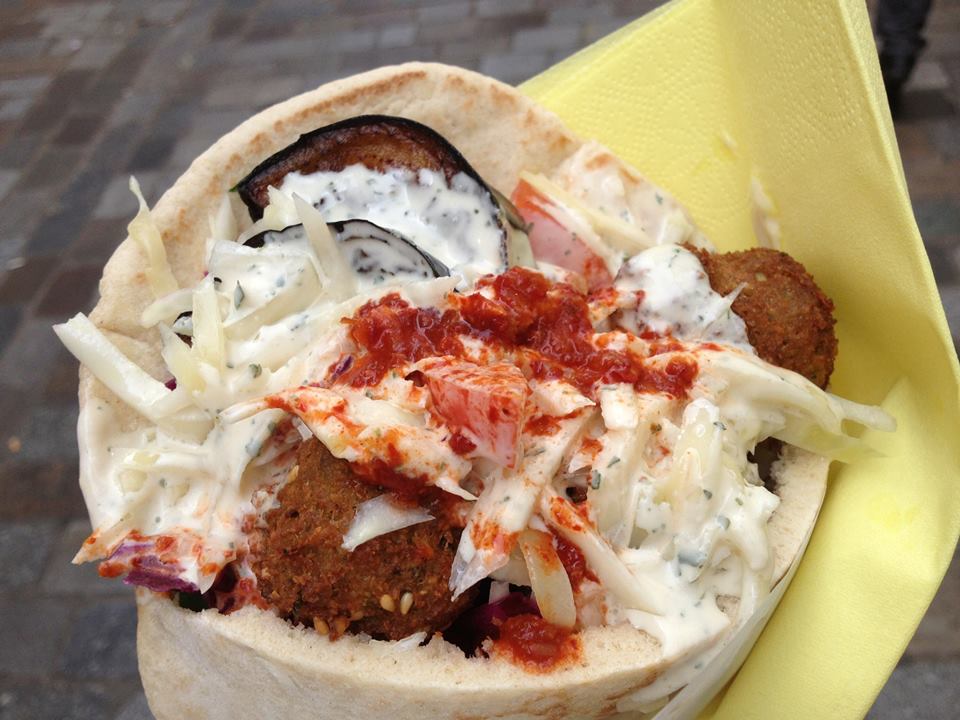Founder’s Note
October 10, 2013 by admin · Leave a Comment
As befits its title, the magazine I AM has undergone multiple transformations, and this month we’re making a comeback – with a revamped identity, reinvented brand, and reinvigorated spirit.
When we founded I AM back in 2009, we saw it as an opportunity to be an international forum to promote and endorse healthful values, to provoke discussion on the definition of beauty and character, and to encourage youthful entrepreneurship. We wanted to empower our generation to be a significant vehicle for global improvement and donate the proceeds from each issue to foundations whose campaigns coincided directly with our magazine’s.
But I AM has also evolved into something more – an outlet to unleash our inner editor, writer, illustrator, photographer, collager, designer, and thinker selves; a venue for pure aesthetic enjoyment; and a community for Millennials from all walks of life and far-flung corners of the world to initiate a cross-cultural dialogue.
Throughout, we’ve witnessed our generation grow and learn, see life and the world and great events. Our generation’s activists, entrepreneurs, celebrities, and trailblazers – they all influence and inspire the editorial and pictorial records of international society that we print.
In the two years since we’ve released our last issue, we’ve been embracing new media and new initiatives. No longer a fashion magazine catered to just teen girls, I AM is now a multimedia lifestyle platform for all college students and young postgrads. We’ve fully transitioned online, and we’ll be posting content four times a year (fall, winter, spring, and summer). We’ve rebuilt our amazingly brilliant, extensively global, and idiosyncratically Gen-Y team that will continue to fill the “pages” of I AM with ideas, words, and images that enshrine moments of life: the people, the passion, the stories, emotions, fascinations, and the authentic – and the banal – experiences.
We’re excited to expand digitally and can’t wait for our readers to join us in exploring this next chapter.
Tiffany Tzeng
[email protected]
Founder
Editor’s Letter
October 10, 2013 by admin · Leave a Comment
Hey everybody – welcome to the re-launch issue of I AM!
When Tiffany first approached me this summer with the offer of joining the I AM team, I was floored. Why? Because we as a generation spend too much time caught up in our own worlds to stop and look around. I AM will hopefully provide a space where we all can take some time to learn about each other and the world we live in.
This issue in particular really speaks to that hope as we have a wide range of op-ed pieces that really provide windows into our contributors’ respective worlds. From the city of Paris, to the streets of Amagansett, NY, not only do we cover a lot of ground this issue, but we also provide perspectives on such topics as: dining alone, foreign volunteerism, how we construct our identities, and much more.
Finally, in honor of New York City – the true home of I AM, we’ve devoted this issue’s lookbooks to the city that never sleeps. Hopefully you’ll be able to appreciate this incredible city through our talented stylists and photographers!
Tiffany and I have worked hard to cull the crowds for their stories and opinions and we hope you enjoy reading the resulting pieces as much as we did!
Enjoy,
Felicity C. Sundlun
[email protected]
Managing Editor
I AM Sessions: Erin Schrode
October 10, 2013 by admin · Leave a Comment
In keeping with that spirit of beginnings and firsts and starts, our fall relaunch issue kicks off a new series, I AM Sessions. In this feature, I AM highlights the personal journeys and business stories, lessons, insight, and advice from the big thinkers and game-changers of the millennial generation. First up is Erin Schrode, a 22-year-old recent NYU grad and a founder of Teens Turning Green and The Schoolbag.
With such a contemporary focus on more organic and environmentally friendly alternatives, and what some would call ‘green living’, the actual reflection of this approach on our daily lives is often lacking. Should it not be as simple as cause and effect? Erin Schrode certainly thinks so, and we’re delighted that she does! Erin is perhaps one of the most notable millennial leaders of the decade, a true game-changer for our generation. At just 22 years of age, Erin recently graduated from NYU, and has founded non-profit organizations that have changed the lives of those on the receiving end of her ideas.
The idea for Erin’s organization, Teens Turning Green, was spawned when she was just thirteen years old. Yes, Erin was no mere naïve teenager. With the insight of her fellow students, she uncovered the harmful materials in cosmetics and other products that we use every day, which were causing damage to our bodies and our environment. And today, her trifecta remains: a product must be safe for you and your personal health, it must be sustainable and it must work. Her organization has a headquarters, and regular staff. But, their person is their only tool. Instead of being interested in a vast profit, they remain interested in the impact of their work, and the depth of this impact, and the mindset that is experienced.
When tragedy struck Haiti, Erin, being the force that she is, made her way there to offer her assistance. After being struck with the state of Haiti, Erin was inspired to provide a well-researched approach of sustaining their education programs, and hence was the beginning of The Schoolbag. Her belief is that the investment in education should be a sustainable one; it is a gift that keeps on giving, much like Erin herself.
Her life and work has been the subject of publications such as Seventeen, The New York Times, Teen Vogue and Vanity Fair to name a few. What is humbling to note, is that regardless of Erin’s palpable success, she’ll never underestimate the value of turning to your mother in times of need, her mother remaining her greatest support throughout each of her endeavors. Erin’s personal journey is one of struggles and triumphs, lessons learnt and lessons taught. She is certainly a young woman of enormous capacity to be generous, driven and well informed, and remains someone who strives to do all she can to make this world, and our generation, worth something more than just apathy and misinformed claims against a cause.
IAMNYMAG: I started reading about you in high school – a November 1, 2007 article in The New York Times and the April 2009 issue of Seventeen to be exact. Both stories covered how you were championing socially and environmentally safe choices through your non-profit, Teens for Safe Cosmetics which would eventually become Teens Turning Green. I saw your name again in the June 2011 issue of Vanity Fair. And then again in the June/July 2011 issue of Teen Vogue when your latest initiative, The Schoolbag, was featured in their Giving Back column. But I want to rewind back to the very beginning. What were you doing before founding Teens Turning Green and The Schoolbag?
Erin Schrode: I grew up in Northern California, raised by a mother who thought very consciously about everything in our lives, and my school embraced a very environmentally sustainable, socially responsible outlook. In our science classes, we did water tests in the San Francisco Bay, field trips to the recycling center, studied endangered species – [all of this] in lower school. Those formative years inspired who I am and my outlook on day-to-day life and the world. Everything in my life, I saw and did responsibly, sustainably, eco or call it what you will; I like the word, ‘conscious’.
Then this study came out that Marin County had the highest breast, prostate, and melanoma cancer rates in the world. And that was in 2001. Breast [cancer] had risen 60 percent in nine years. No one knew why, and there wasn’t money to do the testing. It was a little bit alarming to a young girl just thinking about this health epidemic when there were no answers. And my mom (I’ve already mentioned her twice – she’s an incredibly powerful force in my life!) saw this as an opportunity; you can’t just stand by in the face of injustice; you must take action! So she built what was essentially a political campaign, a door-to-door campaign. They went to 150,000 households in one day and asked the question, ‘Why?’ I was 11 years old in 2002 and saw the power of people, the power of activism, and the power of boots on the ground. This was not just talking about making change, but actually affecting it and taking responsibility in your own hands. That stood out to me.
A couple of years later, a study that came out (and these weren’t fancy scientific studies; these were published in mainstream papers and became popular news articles, which is how little teenage Erin found out about them) that linked the ingredients in personal care products to cancer, birth defects, neurotoxicity, and reproductive harm. While Marin County had the highest cancer rates in the country, at that point, cancer had never impacted my life – however, in the years between my mom founding Search for the Cause and my seeing this study, which was the impetus behind Teens Turning Green, both of my grandparents died of cancer. It became a very personal cause. And I thought, I’m doing so many things right in my life: I eat organic food and put everything in glass not plastic, we have no-VOC paints, furniture that’s vintage and carpets that don’t off-gas, and I think about ethical and eco products. But makeup? That had never even crossed my mind. I was a 7th grader with Maybelline mascara in my pencil case! I loved Herbal Essence shampoo because that was what Britney Spears was promoting at that time and she was who we all saw in popular culture everyday! And suddenly it was an epiphany – okay – not epiphany, an outrage! It was a moment to stop and think; a turning point in my life. What do you mean nobody’s looking out for our health and well-being? What do you mean there’s no regulating body government agency that has to vet products for human uses, human health (not just environmental safety, the actual effects on us, which the FDA doesn’t regulate)? I thought, heck, my friends need to know this. I didn’t know where it was going when we organized the first meeting with middle school and high school students from the Bay Area (where I grew up). We just put out the facts and said, ‘Hey guys, this is what scientists just discovered. What do you think?’ Everybody’s response was the same. We were beautifully naïve at age 13 and all thought, ‘We have to take action! We have to tell them what we want, what we expect, hold them accountable.’ And also, if we can’t use what we have been purchasing from the drugstore, department store, online and what’s in the glossy spreads of the magazines, what can we use?
So the first two things that we did were to create two resources: The Dirty Thirty and Greener Alternatives. For the Dirty Thirty, we worked with scientists to compile a list of – and get ready, this is a mouthful – the thirty most egregious commonly found chemicals in daily use products. In layman’s terms, that means that we put drop boxes in the center of campuses where students could put their old packaging; so when you’re done with a product, give it to us. We are talking regular conventional body products, soap, shampoo, deodorant, toothpaste; it’s guys and girls, it’s old and young. Then we sat around my kitchen table and actually tallied the ingredients we saw the most, so that’s the “most commonly found ingredients.” Then we worked with local chemists to find out why the ingredient is in there: is it a surfactant, colorant, preservative, foamer? And then, what’s the health impact? Is it a known neurotoxin, does it pose an autism risk, is it an endocrine disrupter, is it a carcinogen? And there are – believe it or not – ingredients in products we use that fall into all of those categories. One we found was used as a key ingredient in antifreeze. And as a 13-year-old, you’re going, ‘what the heck is an ingredient that’s in antifreeze for my car doing in my personal care?’ So we had this list, The Dirty Thirty.
The complement to that was Greener Alternatives, which were products we vetted for safety, sustainability, and efficacy. That’s my trifecta: it has to be safe for you and your personal health, it has to be sustainable from an environmental standpoint, and it has to work. Because ultimately, if a product doesn’t work, it’s not serving any purpose and ends up in the waste stream, so you don’t want that either. So many people are rapidly turned off by products deemed as ‘eco’ if they try one and it doesn’t work. My goal is to put out the best of the best. Because if you go to a regular drugstore, try one product and you don’t like it, you’ll go back and try another one until you eventually find one you love and you’ll become this lifelong brand loyalist. But if you try just one product that says organic or natural and it doesn’t work, chances are people are more prone to be completely turned off by the entire natural and organic sector – and go, ‘Oh, that’s crunchy, hippy, granola stuff. It can’t work in my life,” and then try something at the opposite end of the spectrum (read: completely NON-natural). So it is really important to me that these products work. It’s funny because where I grew up in San Francisco, there are a lot of hippies; I mean, the Bay Area was the heart of the counterculture. That’s who I am, proudly. But people will look at me and say I don’t come across as what they stereotypically have in their minds. Well, that stereotype has changed a lot in the past eight-and-a-half years, since we started TTG. In January 2005, the green movement was very peripheral. This was before Vanity Fair’s first green issue that put Julia Roberts and George Clooney on the cover. This was before An Inconvenient Truth. This was before the celebs started rolling up at the Oscars in Priuses. It’s before you had people speaking out actively about eco lifestyle. For me, Teens Turning Greens was a way to make climate change, make environmental activism, make responsible living a piece of your daily life, to break it down and make it fun. So there – that’s what led up to founding Teens Turning Green when I was thirteen!
I AM: Just to backtrack, when you said you would put drop boxes around campuses, were these high school or college campuses?
ES: This was high school. TTG started with a focus on high school. I was in eight grade and the campaign stayed pretty much with high school students for the next four or five years. When I went to college, we launched something called, Project Green Dorm. I was going to NYU and wanted to live in the most ethical, responsible, eco-friendly environment that I could create. We also saw that transition [to college] as a turning point. Suddenly, you have that power to make your own purchases; you’re curating your own space and out on your own in a lot of ways. With that comes this amazing opportunity to influence people to do it right. So we’ve had a ball over the past four years working very closely with hundreds and hundreds of college campuses and thousands of students.
I AM: Was Project Green Dorm a subset of Teens Turning Green?
ES: Originally, Teens Turning Green was called, Teens for Safe Cosmetics. And our focus was on personal care, daily use products. And I always talk about how it’s not just makeup! Guys, boys: do you wash your hair, brush your teeth, wear deodorant? This is universal. We started doing green spas and then, what we called, lifestyle shows – because we wanted to make eco living so fun that people couldn’t ignore us. That was the mission, to make it a currency of cool on high school campuses. We had these balls – the first one we called the Green, Glitz and Glam Ball and it sold out! Hundreds of kids got dressed up, there was an organic meal served, and then there was a lifestyle show on a runway. We went through the day from morning to night – so student models walked the catwalk with sheets and blankets made from organic cotton, which is the second most pesticide-laden crop in the world. Then they had school supplies that were 100 percent post-consumer recycled paper. Then after school, we showed sporting activities with clothing that was ethical, bamboo, hemp, and organic cotton and cool water bottles. We were showcasing the best eco lifestyle products, the beauty products, the fashion, accessories, everything and it was a ball!
We realized after about two years that the campaign was so much more than cosmetics. Teens for Safe Cosmetics was limiting our capacity and also turning off 50% of the population. Guys weren’t really into the cosmetics piece, but they were into the mission. I moved to New York when I was 16 years old and we launched the campaign there with a bunch of high schools in Manhattan. That’s when we transitioned the name and the organization officially changed from Teens for Safe Cosmetics to Teens Turning Green. I love the “turning” – I love that it’s a verb, that it’s current, that it’s ever changing, it’s a journey, it’s in process, we’ll never get there, there’s always a deeper shade and more that we can do. In 2008, we launched a campaign focus on schools, using campuses as a pallet for exploration: janitorial, food service, classroom products, and landscaping. It’s where we spend hours and hours of our day, everyday.
When I went to prom, we created something called, Project Green Prom – which is a microsite: projectgreenprom.com – that has everything about beauty and fashion and the event itself. You can get lookbooks and all sorts of tips and expert opinions. What does it look like for prom to be done in an ethical, green way? It is such an emblem in a way – the ultimate beauty, fashion, high-profile event – and if you can transform prom, you can transform anything. We had the best time! We had this pop-up shop in California, did a big kickoff event in New York, built an online toolkit, and there were green proms going on everywhere in the country! It was a hoot. And that was so successful that we said, well, I am going to college so let’s do something specifically around dorms in a similar fashion. So, TTG launched another microsite: Project Green Dorm. It has everything you could want in twelve different categories from bath to body, food to sleep, study to style, tech to zero waste. And every year, we update them. Project Green Dorm is all about where you exist, what is around you. And it is so fun and has really galvanized a college audience and enabled us to ground our work with an older demographic, and as I was talking about before, a demo that really has the power to make their own choices.
I AM: Let’s talk about the business model of Teens Turning Green.
ES: We are a nonprofit. We are based in the Bay Area. We have a headquarters, we have a staff. Our boots-on-the-ground are our kids. We call them ‘campaign members.’ We have chapters at middle schools, high schools, colleges, some elementary schools, too. How do we measure success? You know, I think that metrics are very important. But metrics are not everything. And some people get so caught up in those numbers. We’re much more interested, and always have been, in the impact, the depth of impact, the anecdotal, the lives touched, the mindset shift. That’s hard to quantify. We certainly are interested in the number of people that participate in our programs. We’re interested in how far the message spreads in that way.
One of our biggest projects is called Project Green Challenge. It’s a 30-day eco lifestyle challenge. Thousands of students take the challenge for the month of October on hundreds of campuses. They’re involving their friends, their family, their school communities, clubs, classes, teachers, and whatnot. In the end we select 14 finalists. And people say, you do all of this for 14 kids? No, we do it to impact, influence, inspire, and activate the masses. However, for those 14 students – we bring them out to California for a three-day summit called, Green University. They are spoken to by some of the most esteemed leaders in the eco and activism world. People from the former mayor of San Francisco and Lieutenant Governor of California, Gavin Newsom, to the CEO of Whole Foods Market and the youngest president ever of the Sierra Club. People that are leaders in their fields. Then [these students] get to develop platforms for social action and they speak and present. It’s truly about these 14 students. That transformational effect, really investing deeply and following through with a few people matters more to us, but at the same time, we make all of our resources digitally available to reach and inspire critical mass.
We work with a lot of companies. We cobrand initiatives with different companies that we believe in. A lot of our food programs are built out with Whole Foods Market. We have a whole second-hand [sector], we call “re” – reduce, reuse, recycle, but also rethink, repurpose, remake, reinvent – with eBay. Those are a couple of our partners. We also work with a lot of small companies, leaders in the organic and natural foods world like Amy’s, Annie’s, and Dr. Bronner’s, these companies that are really walking the walk and talking the talk. TTG has really high integrity in terms of who we decide to work with. We also get grants from foundations – and to them, we are absolutely responsible. We have to come up with deliverables, how many people are impacted, the metrics. So it’s twofold: the digital programs impact a lot of people in terms of the hits – that’s the millions we’re totaling – but the on-the-ground, it’s depth of impact. We’re leading a program right now to take an entire school kitchen from “conventional to conscious” – that’s our whole mission – from overly processed, heat-and-serve food to scratch-cooked, organic, local, sustainable meals. Breakfast and lunch everyday from 120 students. And that’s life-changing for those 120 students! We’re so invested in creating this model and ultimately we put out all of these resources and toolkits so that other people can follow suit.
I AM: What’s the story behind The Schoolbag?
ES: I was a freshman in college. I was sitting at my computer in January of 2010 and up popped these images on my computer screen of the earthquake in Haiti. I had zero connection to the island, I’d never been, I knew no one from there, but I thought, ‘I need to go.’ There was something inside of me that snapped. I was drawn to it and I called my mom – once again, what do you do? You call your mom! An aside… I was speaking in Norway a few weeks ago. It was a two-day conference and three speakers mentioned calling their mothers and it became this hilarious thing. What do you do when you’re in doubt? Often times, you pick up the phone and call someone you trust. Anyways, I picked up the phone and called my mom and said, “I’m going to Haiti.”
She said, ‘I was expecting this call and I’m not going to stop you. I don’t think it’s the wisest choice, but if you feel that’s what you need to do, go forth.’ And I started to pack my bags. About 15 minutes later, I get this call from my mother, ‘You are NOT going to Haiti, don’t you dare get on that plane!’ She had been at a dinner party and said to some friends, ‘My daughter is going to Haiti,’ and they said, ‘you’re absolutely nuts.’ Everyone was saying I was going to be kidnapped, killed, horrible things were going to happen to me, I was going to put myself in grave danger, but the only thing that got through to me was what one person said. He’s a journalist a friend of ours who said, ‘any food you’re eating is their food, any water that you’re drinking is their water, and any shelter that you’re taking up you are taking away from someone that really needs it. And God forbid should anything happen to you, you’ll be the one that gets into the emergency room, you’ll be medevaced out, and you’ll be on the cover of The New York Times.’ I heard that and thought, ‘okay, you’re right.’ I needed to go in to serve a purpose, which I see as critical in any charitable effort, in any business really. In anything you do, if you set out with the intention of doing something for yourself or imposing it on others because you think it is the “right thing to do,” that’s not going anywhere and will not be sustainable or maximize the time or energy put into it.
I realized that what I’m good at is working with young people, so I started calling all these NGOs – the big ones, the UNICEFs, the Oxfams, and Save the Children – saying basically, ‘I am an 18-year-old. I have no experience in disaster relief. But I am a kid and I also know what it’s like to be in a disaster (my house flooded – I’ve been through something like this, unfortunately.) I am really involved in education efforts and if there’s any way I can support you, let me know.’ And everyone said, thanks but no thanks. Then I found this organization called Project Medishare. They were operating a field hospital, the only trauma center and neonatal ICU in the country at that time, and said, ‘absolutely come on down!’ When I got there, we were in tents on the grounds of the airport. It was quite an experience, to say the least. I started off just doing logistics, supporting these doctors and nurses in any way that I could. And they’re like, ‘Where the heck have you been when we’ve needed all of the support?’ I’m non-medical – so while they’re doing the lifesaving, I’m helping them to sustain them. We had seven orphans that were there at the time, four of whom were 12-year-old boys and let me tell you, 12-year-old boys at a hospital is not exactly a match made in heaven, I could only try to keep up with them in terms of energy. One night in pediatrics, there was a translator (he was an out of work teacher working with us as a translator) and he said to me, ‘If I only had the materials, I would teach the kids myself.’ I hear these words ringing in my head all of the time. For him, education wasn’t about having a classroom; he was already a trained teacher. It wasn’t about anything but the fact that he did not have the pens or paper in order to teach these kids. And it seemed so simple to me, yet it’s something I never would have thought of as an outsider looking in. It came from something he recognized as a need and I said, “Sam, I’ll do it. I’m coming back and I’m bringing you school supplies.”
That was the origin of The Schoolbag. I went home to my dorm a few weeks later and was thinking of how I could make this happen. And this idea of The Schoolbag just came to me; bringing bags filled with materials a kid needed to learn for a year was how I could help. This was not the solution, it was a solution and how I could help enable the teachers and the students to reconnect, to offer kids this opportunity to return to normalcy and to learn and to ultimately, have opportunity. You hear a lot about, “this lost generation;” when people lose education, the ramifications down the line can be grave. So I went back that summer and did more research. I came back, kep my promise to Sam. We got him set up in a church. He was teaching his students with the supplies and that was pretty magical. It all came to life. I see huge power in following through with something – which a lot of people aren’t accustomed to, unfortunately. Empty promises abound. So seeing that come to life was beautiful. And then I went around the country and asked a heck of a lot of questions to a heck of a lot of people. What do you need? What sort of supplies? Will this actually help? I didn’t want to just go in and dump. You know, the hospital kept getting all of these supplies; one person came with 5,000 pairs of shoes… thanks? For me, It had to serve a need, it had to be wanted, it had to be loved, it had to be utilized. This one mother said to me, ‘I have a choice between a notebook and a bag of rice.’ That’s the sort of decisions parents are making. They want their kids to go to school, but sometimes need that assistance – not a hand-out, but a hand-up. An investment in education is a sustainable one. I don’t see that as a dollar with one life, but a commodity that has many; it’s the gift that keeps on giving.
So we’ve been back the next three years – our three back-to-school Schoolbag deliveries have reached over 30,000 kids in Haiti. I employ a team on the ground there who go around and do research in advance of our arrival with volunteers. We got access to UN documents talking about schools that had been destroyed and what they had lost. My own mission was to start at the end of the road, not in the center of Port-au-Prince (where yes, there are people in need, but also more attention focused already), but way out in the hinterlands where the earthquake epicenter was, near Léogâne. We literally walked up a hill for 25 minutes to reach a tent school where there were 200 kids singing and waiting for us. And those sorts of places that don’t get the mainstream NGOs because it’s not so easy to reach, it takes time, it takes energy. There are areas in Port-au-Prince that are designated red zones that some international aid organizations and government agencies cannot go. Well, we’re a small, nimble, fly-under-the-radar movement, so it’s easier for us to get to those places. Identifying critical touch points is important. I love Haiti. Ultimately I’m completely enamored with island, the people, the culture. One of my favorite things about The Schoolbag is introducing people to that. I bring dozens of volunteers from around the world, from South Africa to Canada, from Australia to the DR, from all different places with me – and suddenly they’re committed to Haiti as well. So it’s a long-term investment. I’m not going anywhere.
I AM: Hearing about the amazing personal and professional arc that you’ve traveled from such a young age, what advice would you give to the social entrepreneurs of our generation?
ES: I am very blessed to get to speak with young people, with our peer group all over the world all the time. And what always stands out to me is quite simple: when people do, when people act, when people step up. There are so many individuals, groups of people, organizations, governments, corporations that talk or criticize, and ultimately stand apathetically in the wings. Even the smallest act, even the smallest commitment and follow-through matters more than the boldest of words or intentions. And I think our generation can be guilty of talking, of slacktivism, of complaining, hopping behind our computers and sitting behind our screens or simply assuming that because there are so many organizations in our world, somebody else must be taking care of ‘it.’ What can I really do? So, I’ll just go back to my Twitter feed thank you very much. This is tragic; it’s a lost opportunity. I think my message, my hope, my deepest of prayers and desires is that you follow through. My motto is dream and do. Have those crazy ideas – because we have such a unique and extraordinary breadth and depth of inspiration and resources at our finger tips, one that no other generation before us has ever had access to. With that opportunity comes responsibility. That’s the oldest saying in the book, but here we are, poised at this turning point with such power that it can be a bit overwhelming. I think that’s why some people collapse or hide and duck away from it. But use it and make your voice heard! We’ve done quite a bit of political advocacy and the first time I spoke in front of the state congress in California, I was shocked that these gentlemen – this world is still run by an old boys’ club, by the way, a rude awakening – sat there and their eyes weld up with tears. They paused because it’s different to hear stories and platforms, even if they’re radical activist platforms, coming from a young person. I’m not a paid lobbyist, I haven’t been so jaded and blinded and normalized into this system. So seize that, hold on to that because we won’t have that forever! We’ll all be like the rest of them, blending in. But right now, we still have this amazing opportunity. So what if you fail? Fail, fail again, fail greater! There’s so much to learn from failure. And so what? We pick ourselves up and do it again. But really, just freakin’ do it! People that inspire me the most are the doers. Like that amazing Steve Jobs’s quote I have on my wall, on my background… he talks about the crazy ones, the rebels, the people who are crazy enough to think they can change the world are the ones who do. DO IT! There! That’s my rallying call! The Dalai Lama said that the biggest problem facing our generation today is – and he didn’t say poverty, global warming, he didn’t say political corruption or economic depression – he said apathy. So if the Dalai Lama says it, I think I can say it! I also just have such a deep belief in the power of working with young people and mentorship. If you do something, learn something, achieve something – take that moment to show someone else the ropes. At Teens Turning Green, the model we use is: inspiration, education, action. Boom boom boom and I live by that.
I AM: You mention the “hippy, crunchy granola stuff” stereotype of the environmental movement, are there any other green myths you’d like to debunk?
ES: A lot of people talk about the green movement as an elitist movement, that it’s a luxury we can even think about these sorts of issues. I spent 4 semesters abroad. One of my semesters, I spent in Ghana, in West Africa. When I got there, I was struck by these plastic bags, Ziploc-like water sachets all over the ground – that’s how pure drinking water is sold. And I said, somebody has to be doing something about this. This wasn’t me criticizing lack of infrastructure; this was me going, ‘I can’t imagine someone here hasn’t already addressed this issue.’ And sure enough, I found this guy whose company was upcycling these bags into different market totes, hiring local Ghanaians, washing the sachets in reclaimed water, drying them using the power of the sun, and stitching them together into new consumer products. Then I said, ‘wait a second, what sort of education programs do you have?’ He said, ‘what do you mean?’ So, I took it upon myself and went in to middle schools, Accra public schools. My mission was to just see whether kids were aware. I walked in and would say, ‘hey guys, do you drink water?’ And they see me as this international, liekly-aid worker and go, ‘yeah we drink water pure water, pure water in the water sachets.’ Oh the kids are so excited, the most precious things. And I would say, ‘what do you do with it when you’re finished?’ And they go, ‘what do you mean?’ ‘Well, what do you do with the water when you’re done?’ This was never a question they’ve ben asked. And they’d say, ‘I don’t know, toss it?’ I’d get shrugs of shoulders, empty stares. And I’d say, ‘well do you ever see it afterwards?’ And they’d sort of squint their eyes and you see them really trying to think, ‘what is this crazy woman asking us?’ Then one kid would raise his hand and say, ‘Well they were clogging the gutter outside my grandma’s house and it overflowed and flooded our house.’ Somebody else would say, ‘Oh yeah! I went to the beach and my legs got caught in them in the ocean.’ And without a doubt, kids would get up, run out of the classroom, and return holding armfuls of these sachets from the schoolyard. You see those wheels begin to turn; no one had ever made that simple connection, cause and effect. And something as tiny as a water sachet that these students in Accra are drinking becomes an emblem of environmental stewardship and education. Suddenly, they are interested in seeing what they can do across the board and how they can take action; give them something to do and it’s so exciting for them to think they can be part of a solution! News flash: this is the environmental movement! This is not an elitist movement. This is something that anyone can take action on, anywhere in the world regardless of resources. I talk frequently about SAVING money, resources, time, energy by cutting things out of your life. We don’t need all of it. That’s a pet peeve: critical, apathetic people that shame those active in the environmental movement. They are missing the boat and doing us all a disservice.
I AM: Looking into the future, what is next for you?
ES: What a question! You have hit me at the right moment. That’s always the question, right? What’s next? I actually love that question – because as an environmentalist, talking about the cycle of life and what you can become is so exciting. It’s never-ending. And It’s beautiful that we can have “net zero” and goals to neutralize emissions, hit equal and the like. But I say, let’s create net positive impact! That’s my goal – thinking about how to create the most positive impact through what’s next. Teens Turning Green, I’m proud to say, is flourishing. We have a staff headquartered in Northern California in Marin County and students all around the country who are actively involved (and all inspire me daily!). So that keeps going, although I am not there day-to-day. Right now, we’re doing this big back-to-school push with Project Green Dorm and a new campaign called “Freshman Green 15” that turns “Freshman 15” on its head. October is Project Green Challenge! We have these really innovative platforms that are ongoing. The Schoolbag has been adopted by other nations; we’ve done deliveries in East Timor, South Africa, where we have a big one coming up in the fall. I’m working with a girl that lives in the Emirates on an education offshoot project in the Arab world. It’s really exciting – the realization by people around the world that such a model works, is necessary, and can be implemented easily by student leadership. Seeing The Schoolbag grow is wonderful – though like I said, Haiti is my heart and soul, and it will be a piece of me forever.
Personally, in the past four years, I’ve started doing a lot more speaking and consulting, which I really enjoy. I was speaking frequently on Teens Turning Green at conferences and such – and then somebody asked if I could speak on millennials. And I said, ‘what’s a millenial?’ He said, ‘you’re a millennial.’ This was five years ago when the term millennial was new. It wasn’t the hot button thing that everyone was obsessed with, like today. And so I did, speaking about the new green generation and our tendencies towards sustainability. Then the “millenial thing” started taking off and a lot more people wanted me to come talk. And I’m like, wait a second: you want me to talk about me and my experiences and my generation? Absolutely! Companies have (way older) consultants come in to say what we (millennials) think, what we do, how we behave, and our preferences. Honestly, a lot of companies and businesses would much rather listen to a millennial in his or her own voice. So I was really happy to walk through those doors and share a bit of insight. That has grown and it’s a ball! I have the opportunity to sit at board tables and in meetings and circles where our generation isn’t always represented. And I’m still the youngest one – when I started at age 13 and now at 22. I keep holding that torch and bringing in as many fellow rabble-rousers as I can. In the past year, I’ve worked with Coca-Cola, Chipotle, Nestle, and others –multinationals that if you had told my little-grassroots-activist-self I would be working with a few years ago, I would have said, ‘Yeah right!’ But I’ve had some amazing mentors from the business side who have showed me the power of business to change the world. If these massive companies are willing to engage in a transparent, in-depth, systemic, holistic manner, then we can transform industry and the public. I have a lot of fun dabbling in the power of business to do well and good. I am a huge proponent of triple bottom line business that has economic, social, and environmental benefits. Yes, I am an environmentalist and social activist, but that economic piece enables true sustainability, so you can’t leave that out either.
I AM Sessions is I AM’s forum for in-depth discussions with Generation-Y’s global movers and shakers, conducted by founder Tiffany Tzeng. This interview has been edited and condensed. Foreword by Sophie Flecknoe.
Apple’s Jukebox in the Cloud
October 10, 2013 by admin · Leave a Comment
iTunes Radio stirs up the streaming world.
By Justin Harmond
Pandora, Spotify, Rdio, Slacker, etc. Just when it seemed like the music streaming ecosystem couldn’t get any more saturated, Apple announced its new plans to release iTunes Radio – a new music streaming service, available to iOS 7 users, that will come standard with every new Mac device released this fall. Though the program will only be available in the US to begin with, there are plans to roll it out in other countries beginning in 2014.
Functionally, iTunes Radio most closely resembles Pandora. Users can build personalized radio stations based on different songs or artists. As you listen to the radio station more, users are given the opportunity to customize their listening preferences further, telling iTunes to “Play More Like This” or to “Never Play This Again.” Just like Pandora, iTunes Radio gives users the option to add variety to their stations by including other artists or songs as well. On iTunes Radio, a user can also configure a station to play more top hits, more indie gems, or an equal mix of both. Both Pandora and iTunes Radio are ad-supported and thus free for users. In my experience playing around with iTunes Radio, ads run sporadically and consist of short 15-second clips from the Ad Council, among others. If you don’t mind shelling out $25 each year to use Apple’s iTunes Match service, you’ll be able to use an ad-free version of iTunes Radio. While Pandora and iTunes Radio may sound too similar to make you want to switch services, Apple’s position as one of our generation’s biggest and most beloved technology companies distinguishes iTunes Radio from some cheap Pandora clone. Allow me to elaborate…
As the company behind iTunes, the largest digital music store in the world, Apple already has access to an incredibly large range of music. Everything that is featured on the iTunes Store will be available on iTunes Radio. This also means that iTunes Radio users will gain access to iTunes exclusives before they come out anywhere else. Anytime you see an up-and-coming band release the free song of the week or your favorite artist releases a track for buying a pre-order of their next CD, you’ll have immediate access to it on your radio station. Having access to all of this music allows iTunes Radio to make well-informed predictions on what music you might like based on what songs you already have in your iTunes library and the purchase history of other iTunes users. I find that the stations I build on iTunes Radio are more spot-on to my listening preferences than the ones I build on Pandora. After making a few adjustments to my radio station, I rarely find myself having to skip a song. If you rather not build your own station, iTunes Radio gives you access to curated “Featured” stations and 200+ genre focused stations. If post-punk revival music is your jam, iTunes has you covered. Apple does a great job of chronicling your play history as well, providing a full list of the songs you’ve listened to. This makes it very easy to backtrack and find that song that instantly sent shivers down your spine. If you’re one who likes to buy your music, Apple makes it effortless to impulsively buy the song you’re currently listening to. All you have to do is press the conveniently placed “Buy Song” button next to the song information. Ideally, this will ultimately lead to an increase in legal music downloads.
On that note, if you’re one who follows the ever-evolving debate over streaming royalties for musicians, you’ll be happy to know that iTunes Radio pays more to the label for songs than Pandora. They even give labels a percentage of their advertising revenue. On top of all of that, the royalty rates being used by Apple to play artists will increase over time. As streaming services become more commonplace and the number of users on iTunes Radio increases, artists can expect to make more money off of streaming in the future.
Only time will tell if iTunes Radio will truly take off. That being said, there’s no real reason why it shouldn’t. With iTunes Radio, anyone who has iTunes or an iOS device in the United States has access to a vast musical library without ever having to own any music or install any outside app. iTunes’s all-encompassing music catalog means it is highly likely you’ll come across the music that you enjoy. And their knowledge of users listening preferences makes it easier to discover your new favorite artist! As the music industry tries to create new sources of revenue for artists, Apple is leveraging their influential position as a technological and musical powerhouse to bring streaming to the mainstream…no pun intended.
Born and raised in New York City, Justin Harmond is currently a junior at Columbia University studying Anthropology with a focus in Music and Business. He first realized his interest in the music industry in high school after founding Phillips Exeter Academy’s first hip-hop club, ERA. Since then, he continues to stay involved with the music scene, sitting on the board of the Columbia University Society of Hip-Hop (CUSH) in addition to having previously interned at Babygrande Records and iHipHop Distribution. This summer, Justin took a break from working in music to explore his interests in advertising while interning for ad agency Goodby, Silverstein & Partners. When he’s not living and breathing music, Justin spends his free time playing basketball, video games, and scouring tech blogs for the next big thing.
Spotlight On: Tree House Threads
October 10, 2013 by admin · Leave a Comment
By Shami Bery
I have been interested in and active in environmental causes since high school. As time went on, my interest in environmentalism grew. While studying at Brandeis University, my environmentalist attitude grew from simply taking classes based on environmental science, to, during my year off, spending 2 months working with Grassroots India, a non-profit organization in the Western Himalayas. Experiences like this have taught me that above all, awareness is the key to creating an environmentally conscious atmosphere. That same awareness, if marketed and promoted in the right way, can turn into conscious action and activism. This belief has brought me to where I am now.
Since 2009, I have been involved in Flight School Clothing, an urban street wear apparel company based in Boston. Our desire is to make high-end apparel available to all demographics of people. Since our conception, Flight School Clothing has expanded globally – gaining notability in Germany. At the same time, we’ve worked to grow the brand stateside through a series of promotional events and campaigns. Through my experience at Flight School Clothing I have gained many skills needed to launch, not only a clothing line, but also a brand. Using these skills, and my passion for environmentalism, I have decided to grow a brand called “Tree House Threads.” The Tree House brand and mission is the result of my environmentalist attitude and the skills learned as a part of the Flight School Clothing core team.
The goal of Tree House Threads is to present the street wear apparel industry with an environmentally conscious alternative. By pairing pro-environmental themes and designs with 100% organic and recycled materials, Tree House intends on bringing environmentalism to the forefront of the urban fashion industry. While many companies can offer fresh designs on generic fabrics, Tree House is the only company that can offer the same level of quality while using environmentally safe manufacturing and materials. In many cases, companies must sacrifice quality of design and production in the name of their environmental cause. However, Tree House has combined environmental consciousness with the ‘fly’ aesthetic you have come to expect from street wear brands, such as Flight School Clothing. By using 100% organic and recycled materials, Tree House will separate themselves from the environmentally conscious and generic urban apparel brands, by pairing modern and creative designs with organic materials.
Our long-term plan is to exclusively produce using Hemp, but we have an immediate plan to use a combination of Hemp and 100% recycled materials. The use of Hemp will be one of the major factors separating The Tree House brand from any other urban street wear line. In addition to the raw materials, our Tree House design team has come up with a set of campaigns designed to promote environmental awareness. For the winter and spring we have introduced “The Tree House,” a line of t-shirts and sticker designs based on environmental efficiency around the house – scenes of rainwater filtration and recycling are just two of the themes the winter line will discuss. Also in the following months, we have “Save The Trees,” a campaign focused on the anti-deforestation movement and the promotion of hemp as an all-natural, renewable alternative to cotton.
Though clothing is a major part of The Tree House brand’s foundation, Tree House has plans to go beyond that facet and create an interactive atmosphere where community action can blossom. The Tree House, with help from the Flight School team will hold community events based around youth involvement and community awareness. Some of these events will include artist workshops where young aspiring artists can come and get ‘tutored’ by the older generation of Boston area artists. The idea here is to create a dialogue between the generations as well as an environment where idea sharing and collaboration run rampant. In addition to artist conventions, The Tree House will take part in hands-on environmental action. We plan to work with willing non-profit organizations in the Boston area to help lead clothing based campaigns with the intent to develop action in my local urban communities.
As we have been building the company infrastructure, the design team has been working tirelessly to put together two lines of shirts and other apparel. Throughout the summer, the Flight School Clothing team has been promoting the spring line while getting prepared for the fall designs. Feel free to check out the Flight School Clothing website (www.FlightSchoolClothing.com) and be on the lookout for the Tree House Threads homepage and catalog!
Shami Bery, Director of Marketing for Flight School Clothing and President of Tree Life Clothing, was born in India, where he lived for two years, before moving to the USA when he was 3. Currently residing in Roxbury, a borough central to the history and geography of Boston, he has been involved with fashion (through his company Flight School Clothing) and environmental issues (through various internships, both in India and stateside) for a number of years. Upon graduation from Brandeis University, combining these two passions came to fruition with the creation of Tree Life Clothing. While continuing his fashion endeavors, Shami is currently managing two of the rising stars in the Boston area hip-hop scene.
The Art of Dining Alone
October 10, 2013 by admin · Leave a Comment
By Betty Liao
My first time was a couple of years back. The actual experience is all a murky blur (as all ‘firsts’ generally are), but I vividly remember how intimidated I was as I heard the awkward words come out of my mouth: “Yes, a table for one.” Sure, I’d eaten alone plenty of times; at Chipotle, the school cafeteria, and some random hole-in-the-wall, but this was completely different – this place had a hostess, tablecloths, and a leather-bound menu.
Eating alone in a restaurant setting isn’t as solitary as you might imagine; fellow customers attempt to give you empowering smiles, almost as if to say, “You’re so brave doing this alone – because I sure couldn’t,” the typically icy hostess seems to give you a kinder smile, and the wait staff goes that extra mile to make you comfortable – perhaps offering a complimentary cocktail, a glossy magazine, or some light banter. Indeed, once you get used to it, dining alone is really something to be savored.
Betty’s Five Reasons to Dine Alone:
- Get the hottest table in town. There are few who are brave enough to dine solo at the hottest new restaurant in town, but those who do are rewarded handsomely with a near guarantee of getting a table either via reservation, or simply by walking in.
- Be remembered. A striking young lady or hunky young man dining alone is sure to leave an impression. Having the staff recognize you at a restaurant means better service, free food, and massive street-cred in front of your friends.
- Meet interesting new people. I have found that fellow lone diners are truly fascinating individuals, after all, it takes a certain type to be comfortable dining alone. Obviously do not intrude on their solo dining experience, but be friendly and let the conversation flow naturally.
- Feel free to be a dork. I need a good solid minute or two to take food porn, which is too much for most of my dining companions, who want to dive straight in. I also have a friend that dines alone who can spend 30 uninterrupted minutes studying the wine list.
- You’re worth it. Conversation and company are great, but sometimes you just need some ‘me’ time. Why not celebrate your time alone with a special meal?
Betty’s Five Tips for Dining Alone:
- Bring some reading material. Nothing too serious (food and drink will distract you), but engaging nonetheless, preferably nothing you’d be embarrassed to read in public (like Fifty Shades of Grey – ahem). I like to read from the Kindle app of my smart phone, which means I can bring a smaller bag.
- Sit at the bar (and befriend the bartender). Bar seating is usually less formal (and therefore more fun), you don’t need reservations, and nowadays even the fanciest restaurants serve their full menu at the bar. Have an alcohol base in mind (rum, whiskey, gin etc.) and ask the bartender to make something special for you – it’s a great way to get a conversation going.
- Embrace leftovers. Eating solo can be limiting in terms of the number of dishes you can try. Sometimes, I will order with the intention of having leftovers for the next few days. Leftover steak is great in cold salad or a grilled sandwich. Pasta also tastes great reheated with a little fresh Parmesan and pepper flakes on top.
- Take your time. You got all dressed up and came all this way to enjoy a nice meal. Relax and savor the experience.
- The only thing to fear is awkwardness itself. If you don’t think eating alone is awkward, no one else will. Act confidently – like you do this all the time, and look forward to a great meal!
Bon Appétit!
Born and raised in Hong Kong, with a brief detour in London, Betty Liao has grown up loving the fast pace of city life. She enjoys fine food, travel, design, and extreme sports – evident in her founding of Penn Gastronomy Club and her Master Scuba Diver certificate. She is a senior at UPenn Wharton and working part-time at Marc Jacobs in NYC.
Farm to Paris
October 10, 2013 by admin · 2 Comments
By Amanda Shulman
The hum of routine chaos wraps me in its cloak of familiar excitement. Vibrant colors, sharp shouts, rich smells, and bustling people fill the space both in front of and behind me. Cries of “deux boîte de cerise pour trois euros” and “poulet roti, trop chaud!” catch my attention, drawing me into the homes of their respective callers. My regular stroll under the white canopies of my most beloved Parisian open-air market is my favorite part of each day. Stalls of the finest produce I’ve ever seen are displayed in full glory; vegetables lying like precious gems on checkered canvases, with their farmers standing behind them like proud fathers. Glass cases of the freshest cheeses greet me around every bend. Some greetings, like that of the creamy young chèvre I’m so fond of, or that of the sharp camembert in my fridge are familial, while others like the aged Fourme d’Ambert yearn to be answered with a taste. The moistest and crispiest roast chickens spinning on rotisserie spits tease me until I’m holding a warm package containing a plump one in my hand. Cured legs of ham beg to be sliced thinly and large meaty chops implore me to trim and sear them.
A flash of pulsating red catches my eye and I quickly make my way back to investigate. Swollen fat tomatoes are piled atop one another, creating a mountain of rosy boulders that are any summer lover’s dream. They’re of the heirloom variety, as craggily snarls crease their top halves, and they are some of the most beautiful things I’ve ever seen. And they’re not only red – nestled among them are pale greens and sunny yellows, even purple and orange ones that look like the final drops of a sunset. I’m smitten and take a million pictures, but, having just spent all of my change, I don’t make a purchase.
Later that night I’m out for dinner at one of the city’s hip wine bars that features a daily market-based menu. I spot my treasured tomatoes featured on that night’s menu: an heirloom tomato salad graces the appetizer column while a white fish swimming in an heirloom tomato essence sits in the entrées. I get satisfaction from knowing that whoever designs the menu went to the market and found the same prize I did. They were caught by their blushing beauty and had to share them with the customers. I order both dishes and taste the flavors of the tomatoes I had admired only hours earlier, knowing that tomorrow they may be replaced with the green fingers of asparagus or whatever else grabs the day’s market spotlight.
The daily fresh markets have become a ritual for me, one that never loses its novelty. Talking to a cheese vendor, hearing about his goats and how the chèvre I just purchased was only made 48 hours ago is the type of “farm-to-table” experience available every day to both restaurant chefs and the common citizen. France is known for sourcing its food locally and organically, meaning that people rely on seasonal products hailing from mere miles away. The farm-to-table movement currently sweeping the United States is a carryover from the standing French tradition of keeping food local and organic.
After spending the summer in Paris at Le Cordon Bleu, I’ve become overwhelmed with appreciation for the market-based cooking and associated lifestyle. Paris is a food mecca – it sets the trends and pushes the boundaries – but I believe the real beauty lies in its grasp of the simple concept of seasonal and home-grown ingredients. My food experiences during those weeks were eye-opening. Obviously I received the warnings before I left – promises of incredible food that would make me never want to return would be both a blessing and a curse. But words are mere playthings compared to the act of experiencing the tastes for yourself, because that is serious business that no words can do justice to.
The meals I look back on most fondly all have traces of that principal market-based concept. Many restaurants feature prix fixe menus that adapt to the daily market findings. A decadent lunch at the hotspot Septime was one of my favorite culinary experiences: chunks of tuna sashimi in a tomato broth to start, crispy seared pork belly accompanied by eggplant and chanterelles with a mustard sauce to follow, and a sweet honey-pollen ice cream with granola and raspberries to finish. It wasn’t just the incredible food that made the experience, but the fact that I had seen the components of each dish on my market trips, signaling just how fresh everything was.
So when you head to Paris, I entreat you to check out the rotating open-air markets. Fill a bag with cherry tomatoes, a rotisserie chicken, peachy cherries, some cheese, a tin of briny garlicky olives, and have yourself the most incredible picnic ever. And if you’re in more of a mood to be catered to, then check out some of these spots that also share and showcase my appreciation:
Verjus Wine Bar: A small joint that doesn’t take reservations, Verjus Wine Bar is always packed with a diverse crowd of foodies who mostly speak English. The American chef serves up unreal small plates with bold flavors that can be accompanied by superb glasses of wine from their lengthy list. Make sure to go for lunch as well – the sandwiches are insane. DON’T MISS: fried chicken, hush puppies, and for lunch, the braised pork sandwich.
L’Avant Comptoir: This wine bar became one of my go-to hang out spots. I brought absolutely everyone here because I just adored the vibe. Small, standing room only, and totally lively, L’Avant Comptoir serves small tapas-style plates. Their savory take-away crêpes are also some of the best in the city. DON’T MISS: charcuterie plate, blood sausage macaroon, any crêpe.
Septime: Recently named the 49th best restaurant in the world, the food really speaks for itself. Fixed menus for lunch and dinner offer some of the lightest and most beautifully composed food you’ll ever have. Just go. Lunch is great and is also half the price of dinner.
Spring: Spring offers a tasting menu that will blow your mind. The food is seasonal, delicate, and absolutely brilliant. Cheese is an option at the end of the meal, but it’s so amazing that it’s really more of a “must.”
L’Entrecôte: Classic French to the core, this spot only serves one thing: steak-frites. Choose your cooking style and then go crazy, as seconds are offered. And you always want seconds. And extra sauce. Extra, extra sauce.
L’As du Fallafel: Located in the coolest district, Le Marais, this falafel house serves one of the best falafels I’ve ever had. While the line may be long and the falafel competition robust, don’t go anywhere else but here. The pita is fluffy, the slaws crisp, and the fried eggplant velvety.
Amanda Shulman grew up in Greenwich, Connecticut, but now resides in Philadelphia where she attends the University of Pennsylvania. While she is studying Political Science and Journalism at school, she aspires to have a career in the culinary field. This past summer, she attended Le Cordon Bleu in Paris where she studied classical French cuisine and was named Top 5 in her class. She also interned at Food52.com where she worked in the test kitchen and on the editorial side. Past work experience also includes writing for Philadelphia Magazine’s online food blog, Foobooz. Amanda is the author of Stay Hungree, a food blog on which she shares recipes, reviews restaurants, and divulges her culinary adventures.
The Epoch of Commercial Volunteerism
October 10, 2013 by admin · Leave a Comment
The millennial generation’s approach to the white man’s burden.
By Sophia Berhie
During the summer before our senior year in high school, a friend of mine spent a month volunteering in a small, poor, and previously conflict-ridden African country. She returned tanned, donning beautifully hand-etched bracelets, and singing her plans to return to Africa and help the poor. Our friends could relive her experience through the Facebook photos featuring her posing in colorful sundresses with African women and children. While I do not doubt that she had altruistic intentions or that she had some positive effect in the community where she volunteered, my friend’s experience is a sign of an epoch of volunteerism – a phenomenon that is alarmingly present on college campuses across the United States.
Volunteering one’s time is admirable; however, the question we must ask ourselves is: “How effective and enduring is volunteer work that is done for a week or a few months in a country that is not our own and in a language that, more often than not, we do not speak?”
Commercial volunteerism, as I see it, is a common phenomenon with major flaws. By and large, young adults go on immersion and volunteer trips organized by a host organization. For a fee of as high as $1,600/month, the organization shows the volunteers local communities and shuffles them through various short-term volunteer opportunities. The primary aim of these trips is not to help local communities but to educate the eager volunteers through first-hand experiences. While awareness of poverty, disease, and structural violence are necessary, can we, the young volunteers, not learn about them in some other way? While it can be argued that first-hand experience is the most effective way to learn – is it vitally important to the developing world that student volunteers come in high quantities each year for these fact-finding trips?
At college I have countless friends and peers who, like my friend from high school, tout their life changing experience on a weeklong immersion or service trip to the Dominican Republic or a summer spent distributing malaria nets in Africa. Each time a new Facebook cover photo of a friend with an adorable African child surfaces, I cringe and wonder whether the money they spent on their flight and the fees they paid the host organization would have been better spent as a donation to a non-governmental organization (NGO).
My gut reaction is not entirely fair. Many students volunteer for understaffed and underfunded NGOs that need on-the-ground help. Others meet a family with a compelling story that inspires them to start their own non-profit or microfinance organization. The commercial volunteerism that is currently in fashion does have its benefits in these ways. However, these students are not the norm and ultimately the host communities are not best served in this way.
What I, and I suspect many of my peers, struggle with is how to make use of our respective skill sets. In order to do this we must draw the line between a learning experience for ourselves and a beneficial contribution to a host community.
Language skills provide one measure of usefulness. If you want to volunteer in Francophone Africa or Latin America, you should speak French or Spanish, respectively. This may seem self-evident, but the vast majority of our peers who volunteer in Africa have no local language skills.
A second important measure is the nature of the volunteer work itself. If you are traveling to a country to build a house and have construction expertise or past experience that is not easily available in the host country, you can consider yourself an asset. But if you do not have those skills, then why not provide capital finance to a local or international organization already on the ground that can train and employ local workers to build the house. The latter end result not only produces a house, but also provides members of the local community with a skill that they can use to provide for themselves. Such can also contribute to overall community development, thus breaking the cycle of underdevelopment.
In closing, my intention is not to deride our generation’s efforts to positively contribute through international volunteer work. Rather, I wish to draw critical attention – in the form of both praise and censure – so that we might challenge commercial volunteerism and respond with innovative ways to volunteer that play to our existing skill sets and support enduring development efforts.
Sophia Berhie, 20, is from Huntington, West Virginia and currently lives in Abu Dhabi, UAE. She is a graduate of Phillips Exeter Academy and a senior in the Walsh School of Foreign Service at Georgetown University where she majors in International Politics with a concentration in International Security Studies. She is pursuing a certificate in African Studies. She loves street style photographer Scott Schuman of The Sartorialist, grilled cheese, and tennis.

